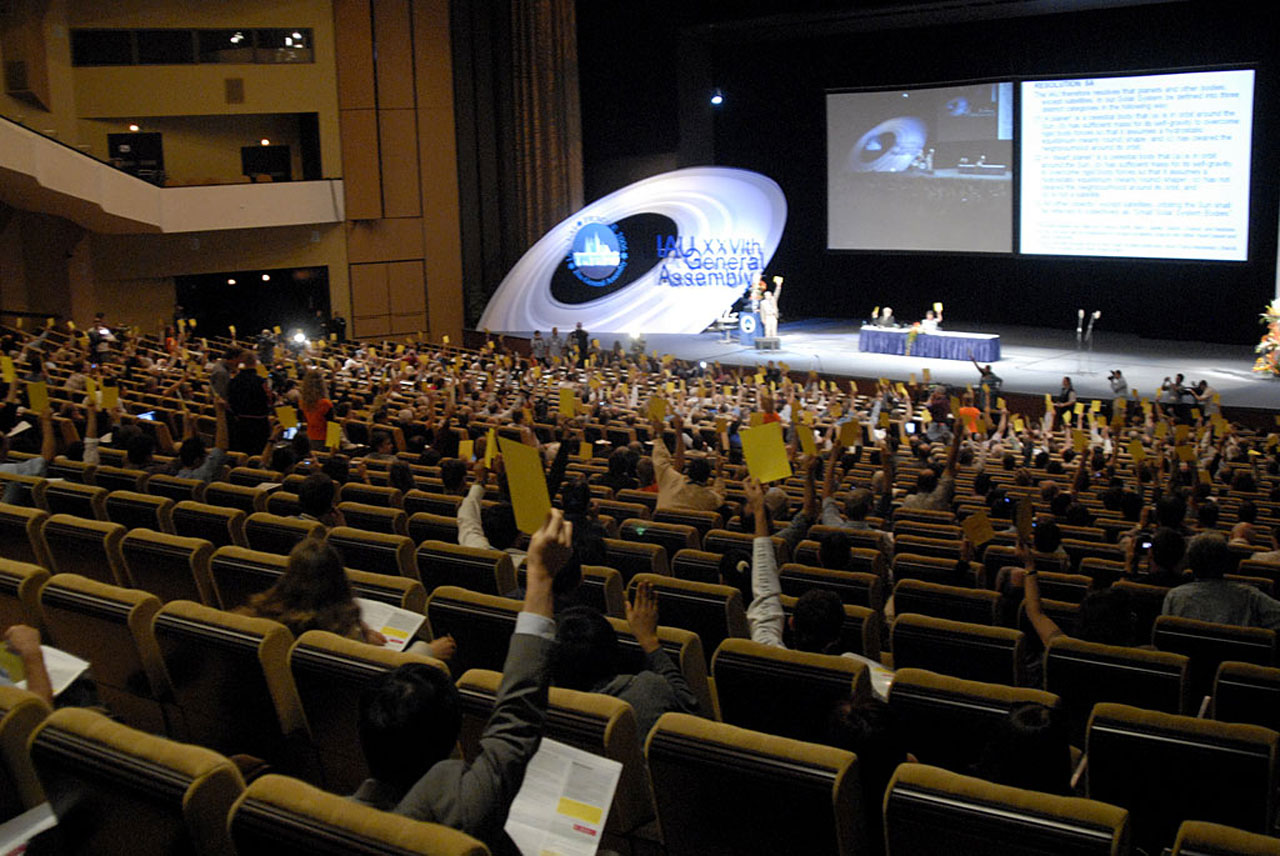One of the talking points of people how think that the definition of a planet should include Pluto is that during the 2006 vote on the definition of a planet, only a small percentage of the members of the IAU actually voted.
This argument is very disingenuous or rather naive, or both. One the most disingenuous of all is Dr. Alan Stern, the principal investigator of the New Horizons mission to Pluto who said
"I'm embarassed for astronomy. Less than 5 percent of the world's astronomers voted." Stern called it "absurd" that only 424 astronomers were allowed to vote, out of some 10,000 professional astronomers around the globe. "It's patently clear that Earth's zone is not cleared," Stern told SPACE.com. "Jupiter has 50,000 trojan asteroids," which orbit in lockstep with the planet.
These are blatant lies.
Regarding the small number of voting members who bothered to vote, Stern was high enough up in the technical food chain to know exactly how professional societies work. Across all societies, voting on resolutions almost uniformly occurs on the last day of the society's general assembly. Most of the members of a technical society do not attend that society's general assembly, and of the few who do attend, most do not attend the final day of the proceedings. A few societies have started to transition to electronic voting, but this is very recent, much more recent than 2006.
Regarding "clearing the neighborhood," Stern either knew or should have known exactly what that phrase meant. If he did know, his statements were a blatant lie. If he didn't know, his statement makes him guilty of academic fraud, which is even worse than lying.
Stern was the lead author of a paper presented to the IAU six years before the vote occurred titled "Regarding the criteria for planethood and proposed planetary classification schemes." This paper developed a metric that shows a 5.5 order of magnitude gap between the eight planets and objects such as Pluto and Ceres. Either he knew what was in that paper / presentation (which makes his later statements a blatant lie) or he didn't, in which case he was guilty of a very serious form of academic fraud, that of forcing a subordinate to add the supervisor's name as an author. That fraud is even worse when the supervisor forces the subordinate to make the supervisor the lead author.
Here's a typical schedule for almost every professional organization's large meeting:
- A meet & greet session on the evening before the meeting officially starts. This is a great time to have informal chats, to grab some free food, and to pocket the per diem.
- An opening plenary session with lots of pomp and circumstance, and lots of blah-blah-blah. This a great time to either meet people in the hallways or to play hooky from the conference and tour the boondoggle of a locale where the conference is being held.
- A number of small paper sessions, poster sessions, society committee meetings, and plenary sessions for invited speakers and invited panels. These meetings, along with the vendor exhibits, are why people typically go to these large conferences.
- A closing session with lots more pomp and circumstance and lots more blah-blah-blah. This is almost universally where proposals / rule changes / resolutions are voted on. This is also almost universally a great time to take one last look at the vendor exhibits, to play hooky and tour the boondoggle city, or to be already flying home.
Most of the members of a professional organization do not attend the organization's general assembly; they are members for other reasons. Of the fraction of members who do attend, most do not attend the opening session, and even fewer attend the closing session. Voting has traditionally been very low. This tradition is changing as some societies now use electronic voting, but this is very recent.
Since pictures are worth a thousand words, here are a couple of pictures from the 2006 IAU General Assembly voting session, one from the rear and one from the front:


Below are a couple of pictures from the 2015 IAU General Assembly, the first from the opening session and the second from the voting during the closing session. Note that the closing session didn't even use the full auditorium.





